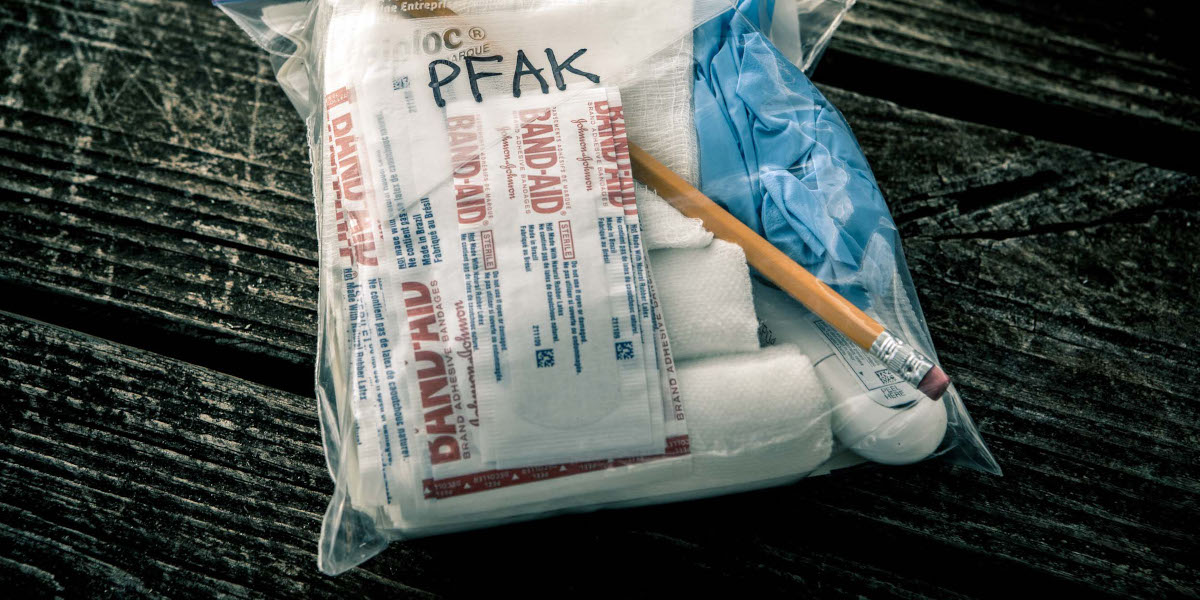DareBee Programs Combine Self-Defense Training With At-Home Fitness
Oh, and it's all free.

There's no doubt about the numerous benefits of regular exercise: healthier weight, greater strength, lower anxiety, resistance to disease. But, for most of us, finding the time to exercise is difficult. Trying to add some kind of regular self-defense training is even more of a challenge. Add weapons practice into the mix, and it really becomes difficult to develop a schedule that can sustain the highly unpredictable demands of work, family, household, and other interests.
A great example is Crossfit. You probably know a lot of people who tried Crossfit, and were very enthusiastic about it. But how many of them are still doing it a year later? An hour-plus in the gym every day may get results, but not only is it extremely taxing on the body, it's almost impossible to maintain, if you have children or need more than four hours of sleep per night.
At the opposite end of the spectrum is the "Four Hour Body" weightlifting program championed by popular "lifehacker" Tim Ferriss. Based largely on the High Intensity Training developed by Arthur Jones in the 1970s, Ferriss's "Occam's Protocol" claims to offer the maximum results in the minimum time. HIT in general is interesting, because it stresses brief, infrequent, heavy workouts, separated by significant recovery time - usually one to three "rest days" per workout. HIT advocates, including Ferriss, caution that a "rest day" should not be sedentary, but should involve some other kind of healthy activity. This makes it a perfect fit for people who want to strengthen their muscles and bones through resistance training, while also developing and maintaining combat skills.
The ideal complement to HIT is participation in a challenging class taught by a qualified instructor in Krav Maga, Kali, Systema, or a traditional martial art. But, as most of us know, life does not always permit the ideal to become the actual. When a class just can't squeeze into your budget or your schedule, there's always at-home practice. Fortunately, this no longer means trying to make up your own program, or following the same instructional video every day. A "free, ad-free, and product-placement-free" website called DareBee, founded by trainer, designer and martial artist Neila Rey provides a great variety of routines, ranging from fun, pop-culture-themed single-day workouts to complex, 30-day programs such as the Warrior's Codex.
While internet commenters have been quick to criticize the DareBee workouts for focusing on "push" exercises and neglecting "pull" exercises, the fact is that most combat-related movements are both pushing motions and pulling motions, because every movement has a pull-back or reset. When you punch or kick properly, you pull your arm or leg back just as quickly as you push it out. This means that "combatives" are not only functional movements, but outstanding bodyweight exercises, especially when paired with multi-joint exercises like push-ups and squats. For example, if you follow the Warrior's Codex, you will become very familiar with the "Push Up Double Punch" - Neila Rey's version of the universally beloved burpee - which works almost every muscle in the body.
By pairing DareBee workouts - especially the Warrior's Codex - with HIT resistance work, you can effectively combine self-defense and exercise without breaking the bank or struggling with an inflexible class schedule. Once you get familiar with the exercises, it's even fun to work out while watching movies or TV shows.
The legendary swordsman Miyamoto Musashi was said to do 10,000 punches and 10,000 kicks every day. There's a reason for that. When you spend some real time practicing fundamental combatives like punches and kicks - movements that are universal to virtually every fighting system - your body will start to correct itself. For example, if you've done a few hundred punches, you'll naturally start using more hip motion, because your arms will be tired. The more you practice, the more refined and powerful your techniques will be, and the more endurance you'll build. Then, when you are able to participate in a class or group training environment, you'll be able to focus more on reflexes and learning new techniques, and less on coordination, strength or stamina.
Of course, the same goes for weapons training as well; that's why dry-fire practice is such a great skill builder. If you draw your weapon, grip it properly, get a sight picture, and squeeze the trigger 1,000 times with a snap cap in it instead of a bullet, when you do use bullets, you'll be that much smoother, faster and more efficient.
Speaking of weapons, there are DareBee workouts that use swords, so if you're into bladework, you can mix some fundamental sword movement into your workouts as well.
All in all, if you combine regular but not-too-frequent HIT, combative-based daily workouts, and weapon training, you'll find that it really isn't that hard to work it into your daily schedule. Instead of a training day being something unusual, a day with no training will be something unusual!



